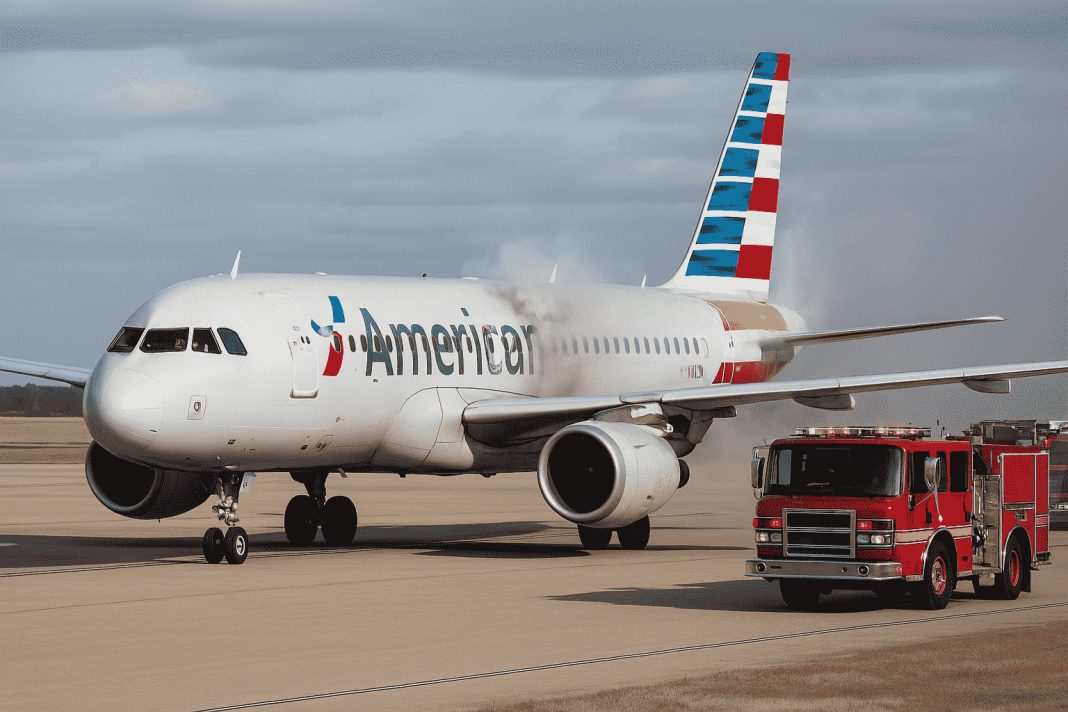In the early hours of April 28, 2025, an American Airlines emergency landing was executed after Flight 2332 encountered smoke in the cockpit. The Airbus A320 had just departed from Dallas-Fort Worth International Airport (DFW) en route to Amarillo, Texas, when the pilots were forced to declare an emergency. All 96 passengers and crew landed safely back at DFW. The incident highlighted the importance of effective emergency response and in-flight communication protocols.
American Airlines Emergency Landing Declared After Takeoff
Flight 2332 lifted off at 12:43 AM, already delayed by nearly two hours. Moments into the climb, the pilots noticed smoke filling the cockpit. Recognizing the danger, they quickly contacted air traffic control (ATC) with a distress call.
This swift decision led to an American Airlines emergency landing, avoiding potential disaster. Emergency protocols were initiated immediately.
Communication Breakdown During American Airlines Emergency Landing
As the situation unfolded, communication between the flight crew and ATC became increasingly difficult. The pilots requested instructions multiple times, suggesting issues with the aircraft’s radio systems.
Such communication failures during an emergency landing pose serious concerns. While the cause of the radio difficulties is still under review, the situation underscored how technical failures can escalate in crisis situations.
Safe Return and Evaluation Following American Airlines Emergency Landing
The A320 safely landed at DFW at 1:01 AM, just 18 minutes after departure. Upon landing, the pilots instructed emergency responders to focus on the front of the aircraft. It remained unclear whether the smoke originated from electrical components or the engines.
Emergency teams inspected the engines and the avionics bay. After a 19-hour examination, the aircraft was declared safe and returned to active duty. The quick and skilled response from the crew played a major role in the success of this American Airlines emergency landing.
Aviation Safety Concerns After Emergency Landing
The incident raised significant questions about aviation safety, particularly around cockpit systems and radio communication. While the flight crew performed admirably, the communication problems bring attention to the need for robust backup systems.
Each emergency landing should trigger a full review of technical components, especially those vital in emergencies. Aviation authorities are expected to follow up with safety advisories and potential inspections of similar aircraft models.
Training and Protocols Behind Emergency Landing
Crew training played a critical role in managing this emergency. The pilots’ calm and decisive actions ensured the safety of everyone on board. This American Airlines emergency landing is a clear example of how thorough training and practiced protocols can save lives.
From declaring the emergency to coordinating with ATC and guiding the aircraft back to DFW, the professionalism of the crew was essential. It highlights the importance of not only technical systems but also human readiness during a crisis.
Looking Ahead After Emergency Landing
Airlines and regulators will likely examine whether additional safety procedures need to be introduced or updated following this American Airlines emergency landing. Preventing cockpit smoke incidents and ensuring clear communications will remain top priorities.
Future changes may include enhancing radio redundancy, cockpit air quality sensors, and emergency response integration with airport authorities. These steps are essential in an industry where every second counts during an emergency.
The April 28 incident involving American Airlines Flight 2332 serves as a strong reminder that aviation safety relies on both technology and human response. While no injuries occurred, the Airlines emergency landing exposed weak points in communication systems that must be addressed.
With rapid decision-making, proper training, and effective emergency response, disaster was avoided. But the aviation industry must use this event to further refine safety protocols to protect future passengers and crew.



